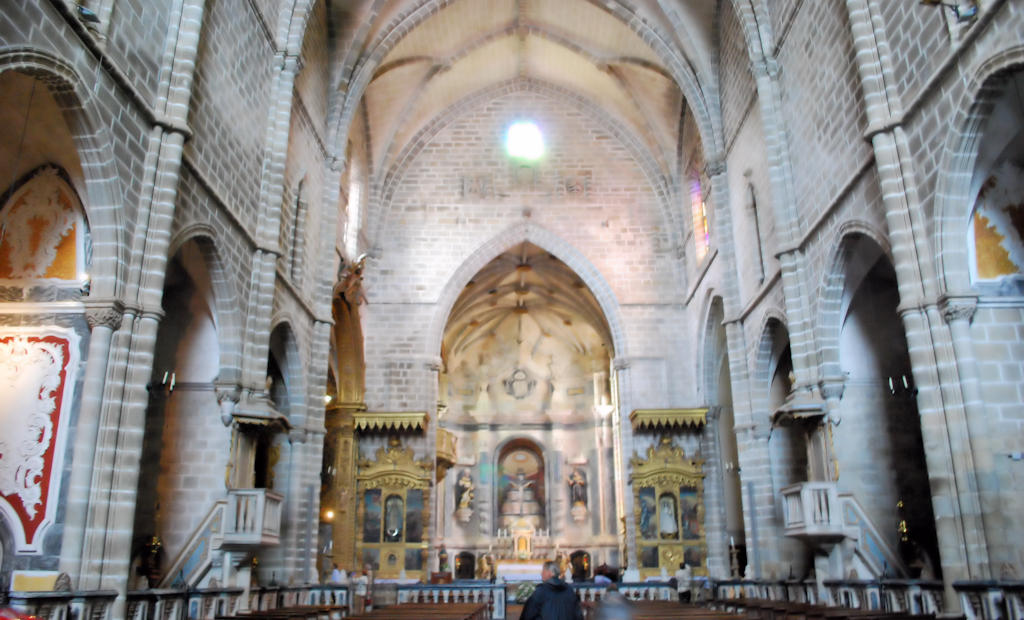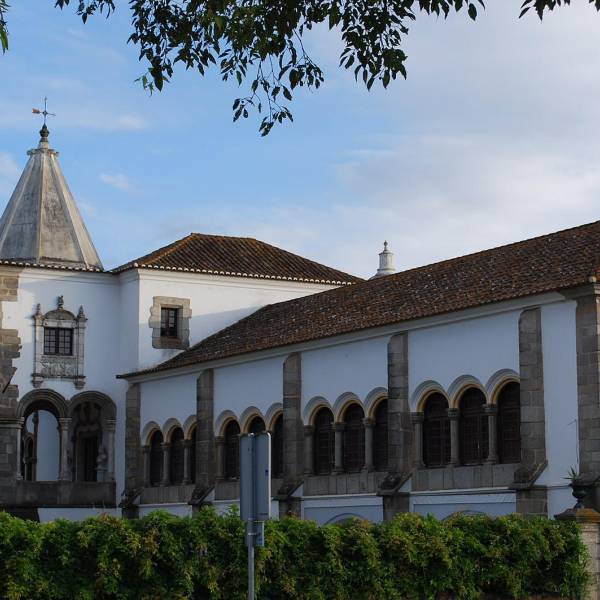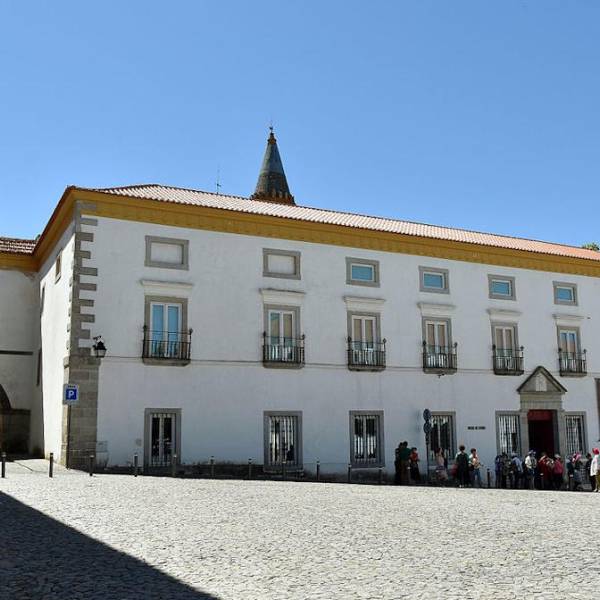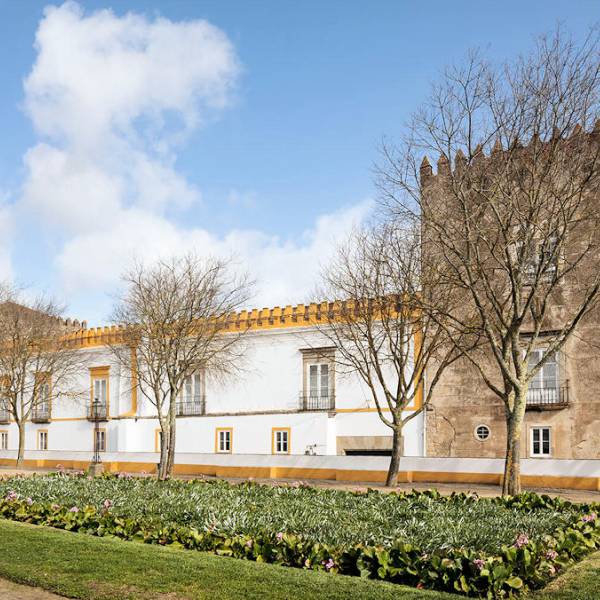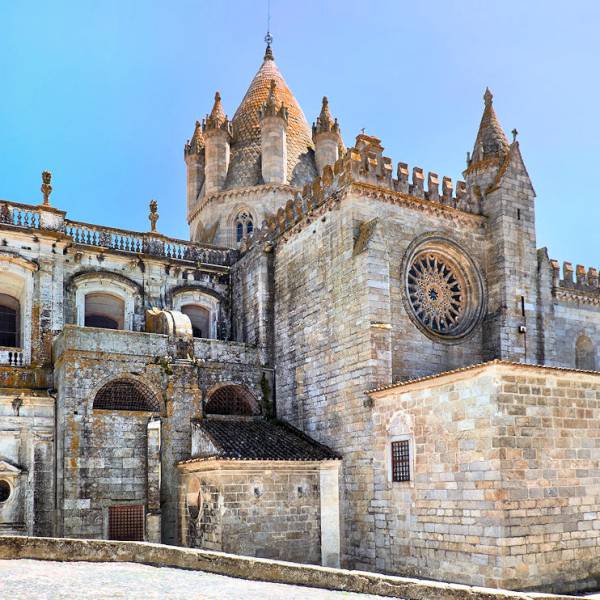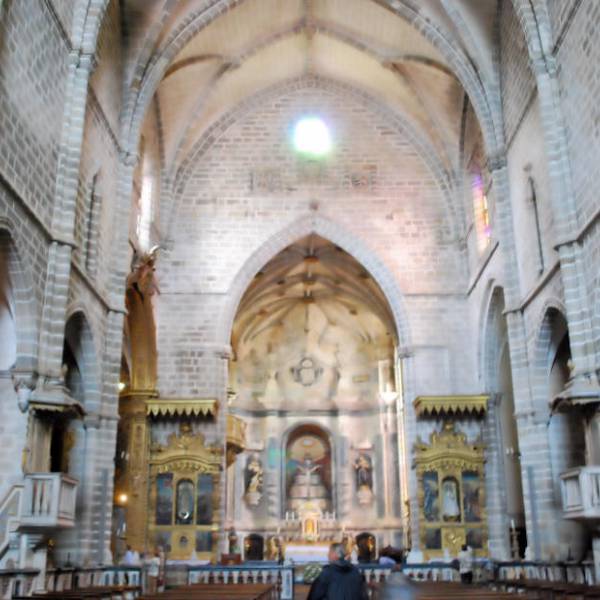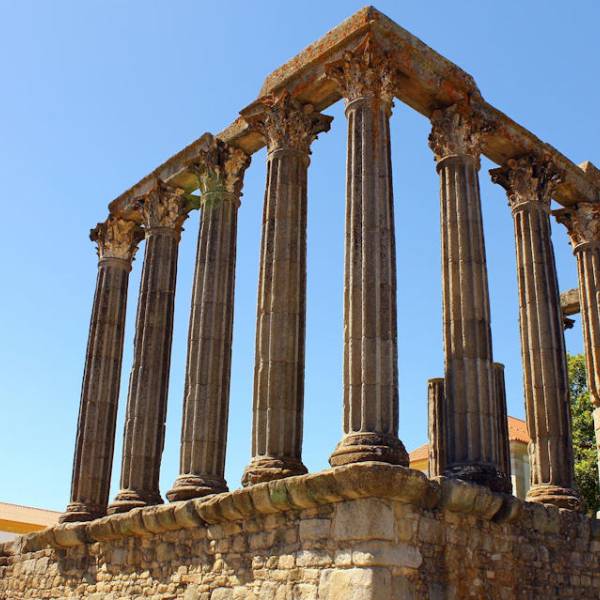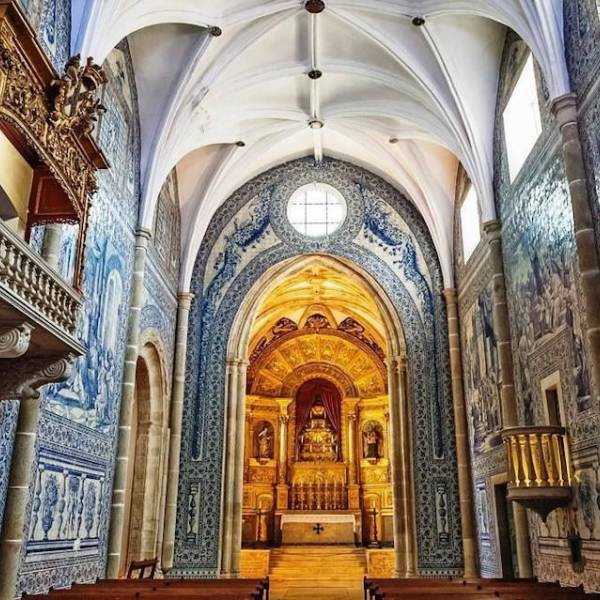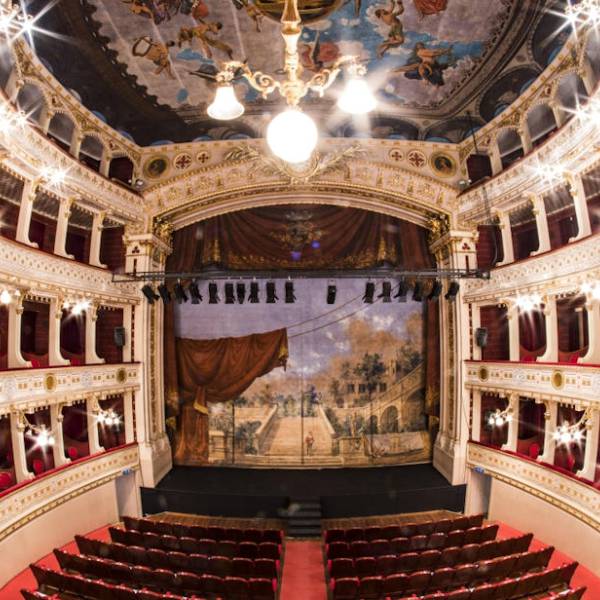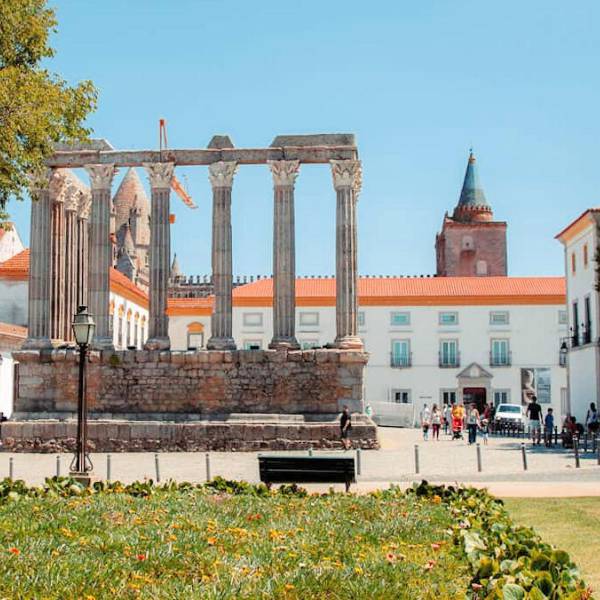Évora, with its Church of São Francisco as one of its crown jewels, is a highly recommended day trip from Lisbon due to its historical significance and architectural beauty. As a UNESCO World Heritage site, Évora offers visitors the opportunity to immerse themselves in Portugal's rich history and experience the unique blend of Gothic and Manueline architecture. The city's proximity to Lisbon, coupled with its captivating attractions and cultural charm, makes it an ideal destination for a day trip.
The Convent of São Francisco in Évora is said to have been the first Franciscan house in Portugal, founded in the 13th century. Following the principles of Saint Francis' Rule, the original monastic church had three naves with communicating chapels. Several important ceremonies took place in this early building, including the marriage of Pedro I to Constança Manuel. Some remnants of this period can still be seen, such as the fluted openings flanking the main portal. In the late 15th century, the church underwent remodeling, resulting in the magnificent temple that stands today and is one of the most impressive churches in Portugal. While respecting the original boundaries, the three naves were replaced by the existing single nave, covered by the bold Gothic-Manueline vault that reaches a height of twenty-four meters. During this period, the Convent of São Francisco experienced its golden age when the court of King Afonso V began to settle in the conventual space during stays in Évora. As a result, the Church of São Francisco was elevated to the status of a Royal Chapel, explaining the multiple royal emblems of King João II and King Manuel I. It was during this time that the monastery earned the title of the "Golden Convent" due to the richness with which the Royal Family adorned it.
After this period of splendor, which somewhat contradicted the Franciscan ideals of poverty and simplicity, a less glorious period followed, exacerbated by the loss of independence in 1580. It was during this time that the curious Chapel of Bones, designed to provoke contemplation on the ephemeral nature of human life, was constructed. In the 18th century, several gilded and marble altarpieces were built, many of which were subsidized by the benefactors of the respective chapels, where they had private burial sites. In the 19th century, the convent faced a new crisis with the extinction of religious orders in 1834. The entire monastic area was nationalized, and the municipal court was housed there until around 1895, when most of the conventual buildings, such as the dormitories and parts of the cloister, were demolished due to their deteriorating state. However, the magnificent church was saved because it became the parish church of the São Pedro parish in 1840.
The Church of São Francisco in Évora is characterized by its Gothic-Manueline architecture, with notable features such as battlements and towers on the façades, the main portal, and the magnificent vault of the nave. Inside the extensive nave of the church, ten lateral chapels open up, adorned with gilded and polychrome altarpieces from the 18th century and stucco works from the 19th century. Some of these altarpieces were salvaged from the Church of the Convent of Graça, which was in ruins. The Baptistery houses the baptismal font from the former Church of São Pedro and a curious representation of the Baptism of Christ in the Jordan, made of cork and originating from the former Convent of Santa Mónica.
Lisbon.vip Recommends
One of the most majestic artistic ensembles in the Church of São Francisco is found in the Chapel of the Venerable Third Order of Saint Francis of Penitence, composed of laypeople. This chapel harmoniously combines the splendor of Baroque woodwork from the Joanine period with azulejos (traditional Portuguese ceramic tiles) and paintings depicting Franciscan themes.
Adjacent to the transept's north side stands the small Renaissance Chapel of São Joãozinho, an independent structure that was once separate from the Franciscan temple. It served as the original headquarters of the Holy House of Mercy of Évora and is adorned with a marble sculpture of the Annunciation angel from the 16th century.
The destruction of the conventual area spared the former chapter hall, which was transformed into the Chapel of Senhor dos Passos of the House of Bones (an image representing Christ's suffering on the way to Calvary and of great local devotion). The shrine where the image is displayed is a scaled-down model of the main chapel of Évora Cathedral and was constructed by J. F. Ludwig, better known as Ludovice, the 18th-century architect who designed it. To the right of the shrine, there is a painting by Francisco de Herrera the Elder depicting the Tears of Saint Peter.
The Chapel of Bones (Capela dos Ossos) is one of the highlights of this grand monument and is considered one of Évora's most iconic attractions. Constructed between the 16th and 17th centuries on the site of the friars' dormitory, it was initiated by three Franciscan friars who sought to provide a contemplative space reflecting on the brevity of human life. The chapel is composed of human bones sourced from the convent's burial grounds and other churches and cemeteries in the city. The walls and parts of the vault are covered with thousands of human bones, illustrating the founders' idea, expressed in the inscription above the chapel entrance: "We bones that are here await yours".
The Church of São Francisco is also rich in religious statuary and Renaissance and Baroque paintings, displayed in the chapels and other areas that have survived to this day.
A visit to the Church of São Francisco in Évora is a journey through time and a testament to the intricate artistry and historical significance of the site. Its blend of architectural styles, from the Gothic and Manueline elements to the Baroque and Renaissance artworks, showcases the evolution of artistic expression throughout the centuries. Beyond its aesthetic appeal, the church's history is deeply intertwined with the maritime expansion period of Portugal, reflecting the country's cultural and religious heritage. Whether it's admiring the intricate details of the façade, marvelling at the majestic nave and vaulted ceiling, or contemplating the somber beauty of the Chapel of Bones, visitors to the Church of São Francisco in Évora are sure to be captivated by its architectural splendor and historical resonance.
Map View


